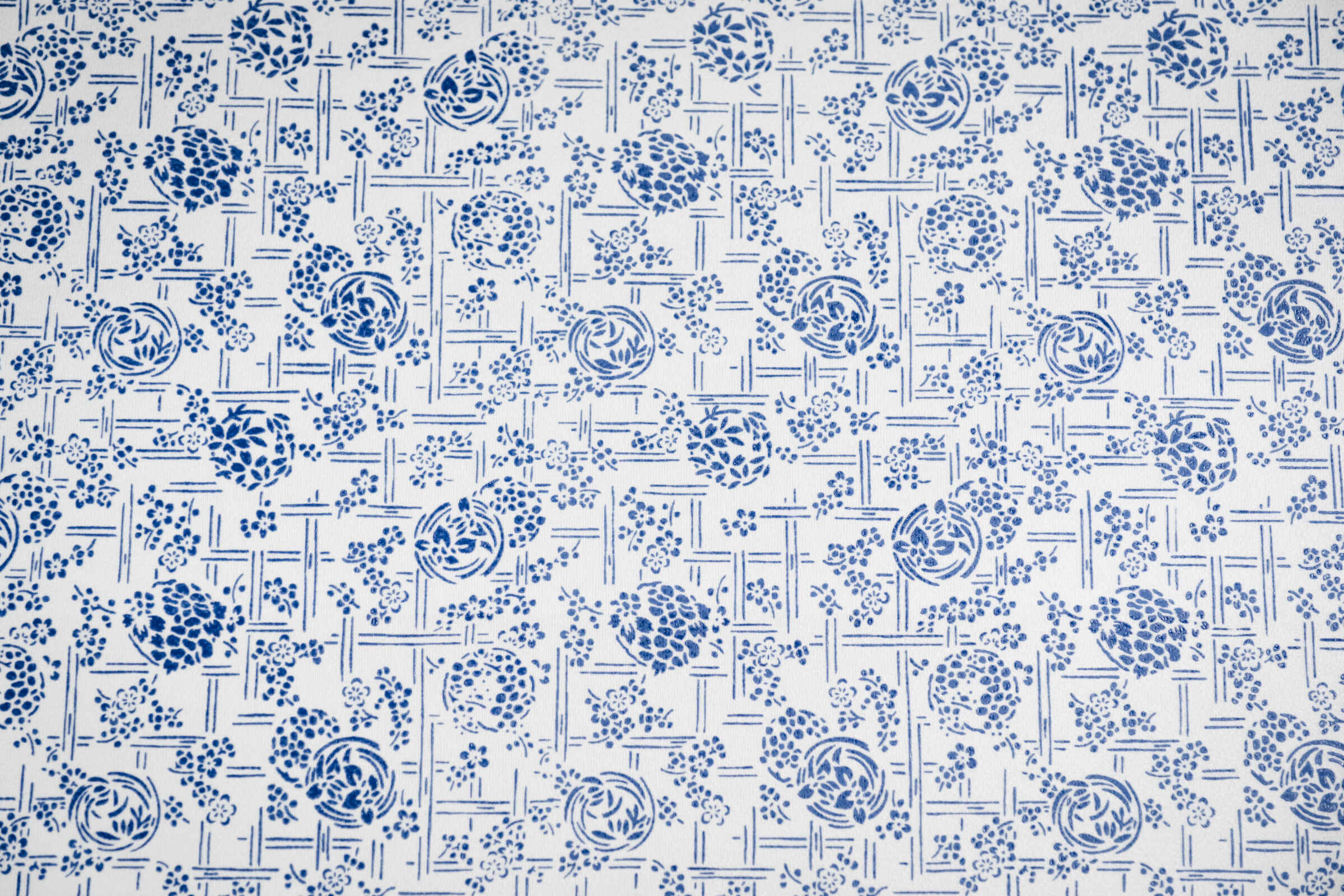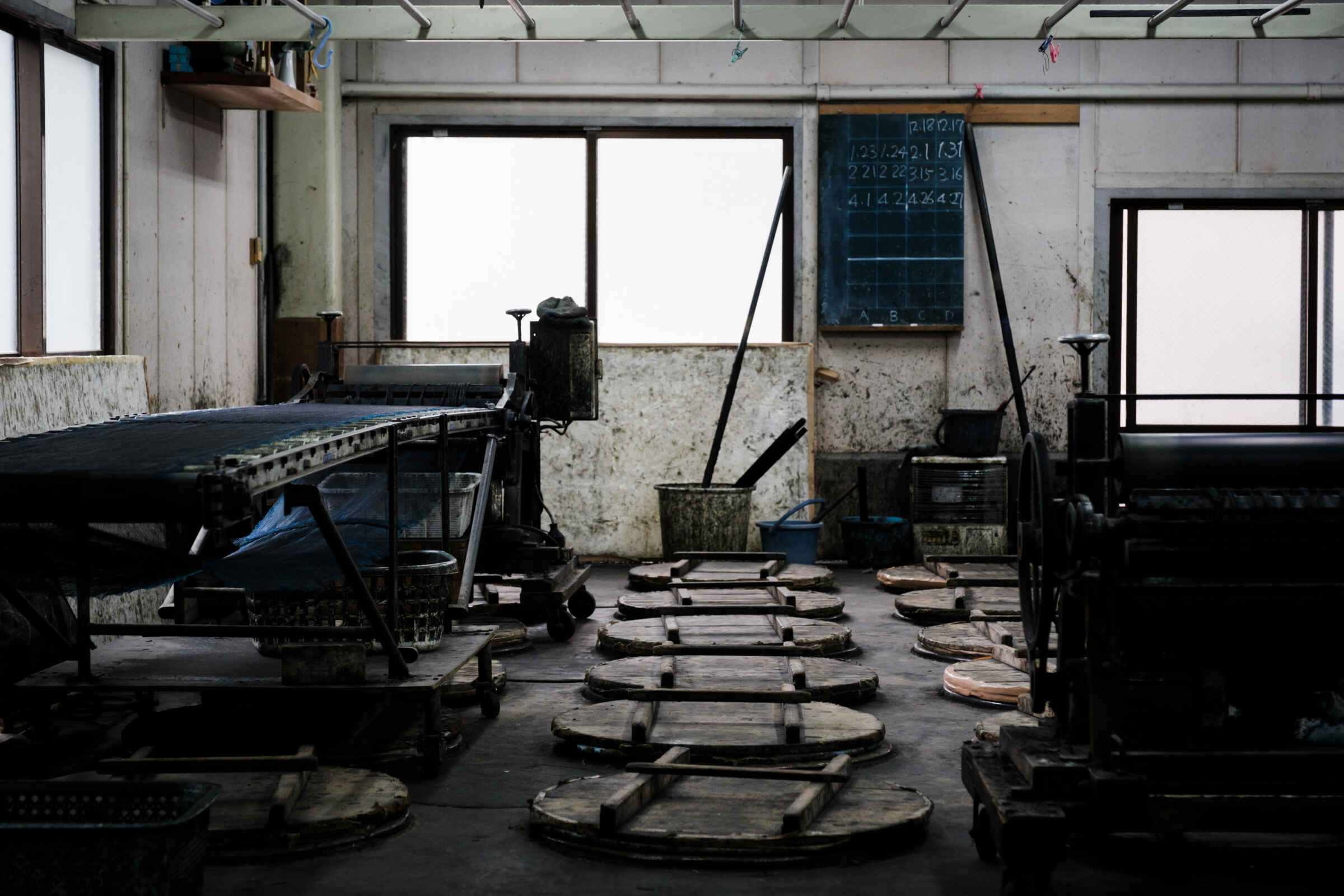
Frog Ink Dyeing Kogei used to dye with indigo using chemicals (chemical dyeing).
Faced with pollution problems during the high-growth period, the company switched to lye fermentation dyeing, a traditional Japanese dyeing method, in 1979 after a meeting between the previous president and Akito Sato, the 19th generation of the Sato family in Tokushima.
Since then, he has supported Hon Aizome Masaori Kobo's Hon Aizome dyeing process.
以前は化学薬品を用いた藍染め(化学建て)を行っていた蛙印染色工芸。
高度成長期の公害問題に直面し、先代社長と徳島の佐藤家19代目佐藤昭人との出会いをきっかけに、1979年より日本伝統の染色法である灰汁発酵建てに切り替える。
以来、本藍染 雅織工房の本藍染めを支えてきた。
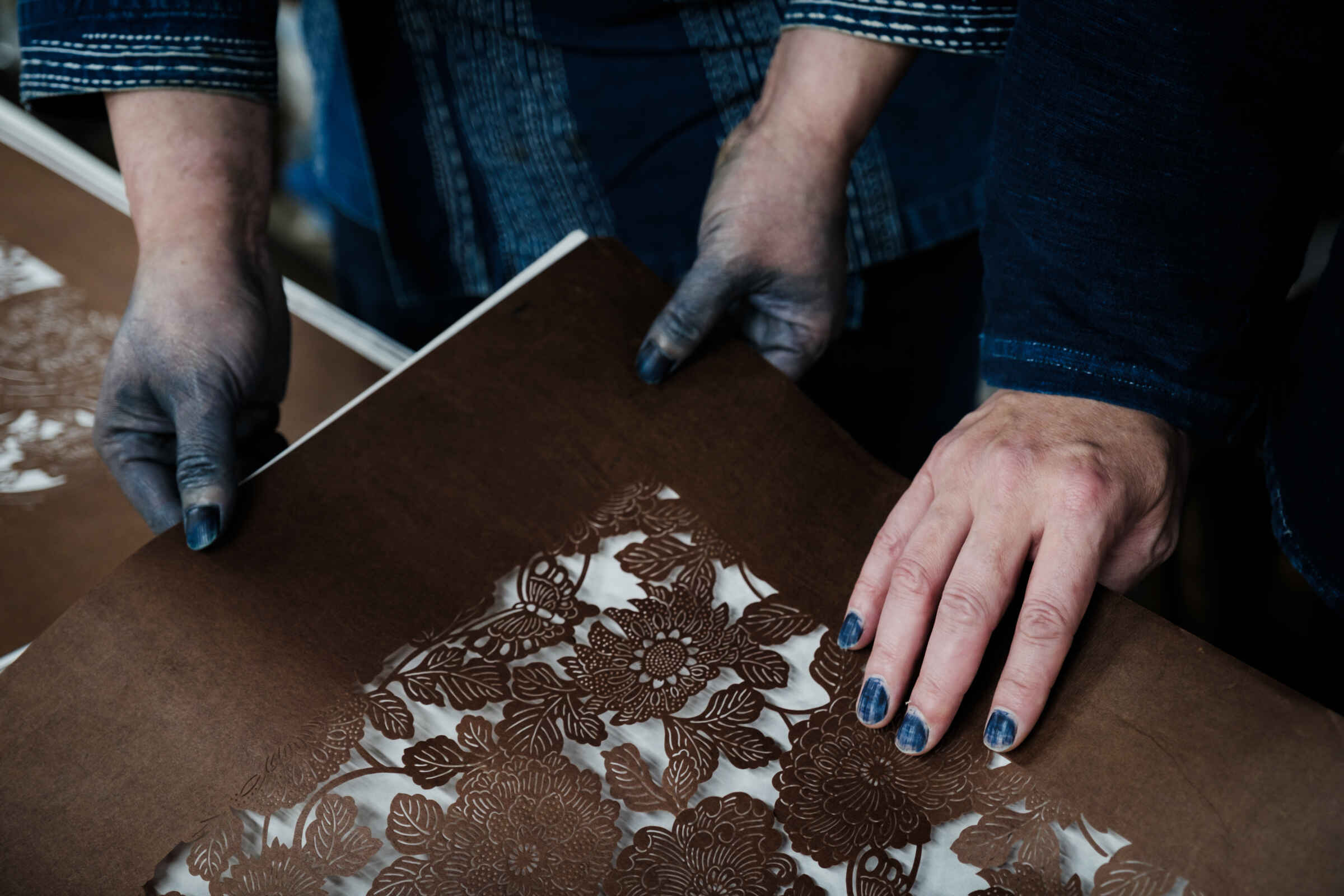
Frog Seal Dyeing Craft has inherited a traditional dyeing technique called "nagaita chugata.
This is a typical dyeing method for yukata that was popular in the Edo period.
The fabric is stretched over a single 7.5 meter long fir board, a pattern is placed on the board, antisome paste is placed, and after drying in the sun, the fabric is soaked in an indigo jar and dyed a beautiful indigo color.
蛙印染色工芸では、「長板中形」という伝統的な染色技法を継承している。
これは、江戸時代に流行した浴衣の代表的な染色方法。
約7.5メートルの長いモミの一枚板の上に生地を張り付けて型紙を置き、防染糊を置いて、天日干しの後、藍甕で浸染して美しい藍色に染め上げる。
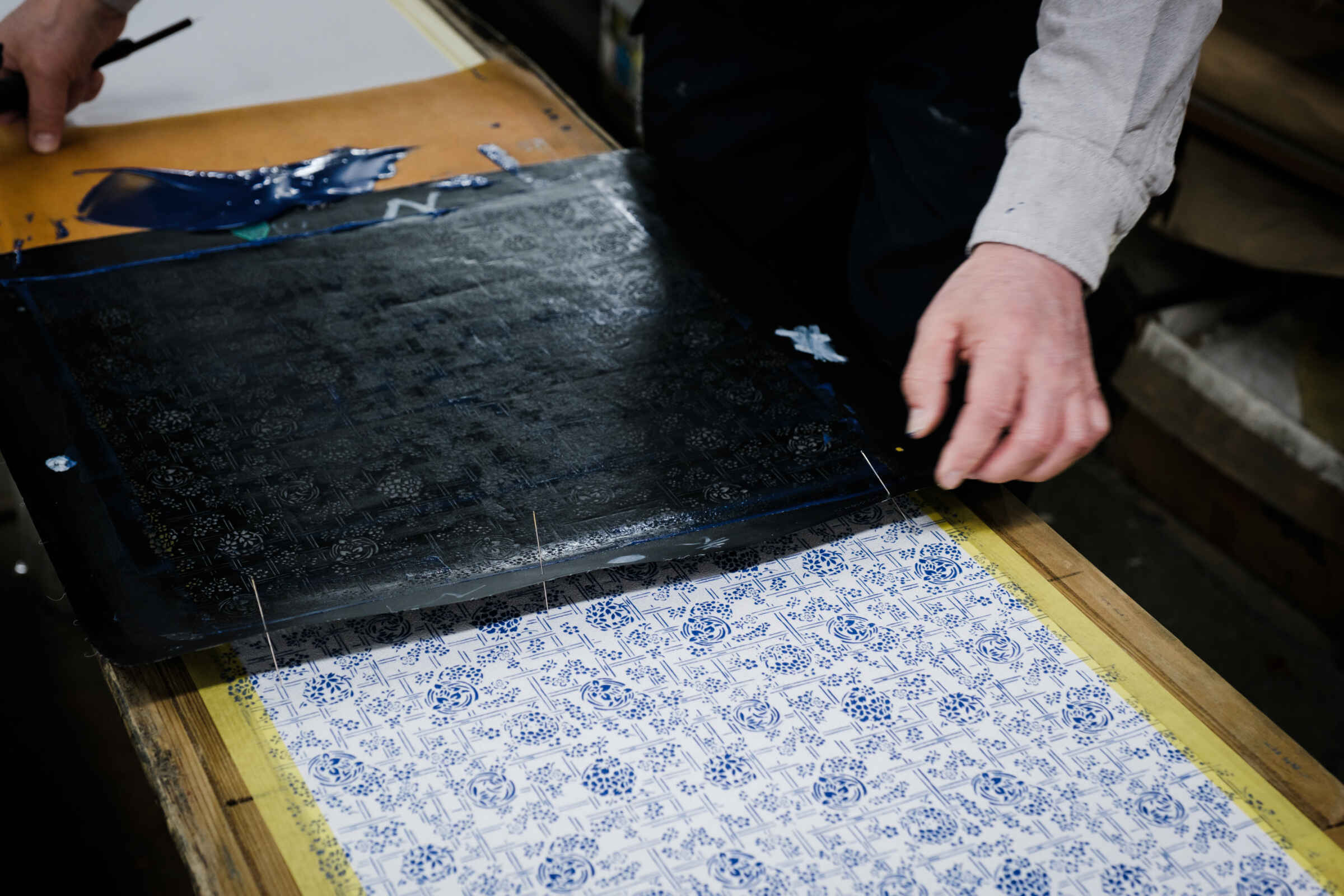
An elaborate patterned paper pattern is cut out and placed on a cotton cloth, and antiseptic glue is applied to the paper pattern. When the pattern is peeled off, the pattern remains on the cloth.
複雑な模様を切り抜いた精巧な型紙を綿布に置き、その上に防染糊を塗り付けると、切り抜いた部分の布に糊が付く。型紙をはがすと、布の上に型紙の模様が残る。
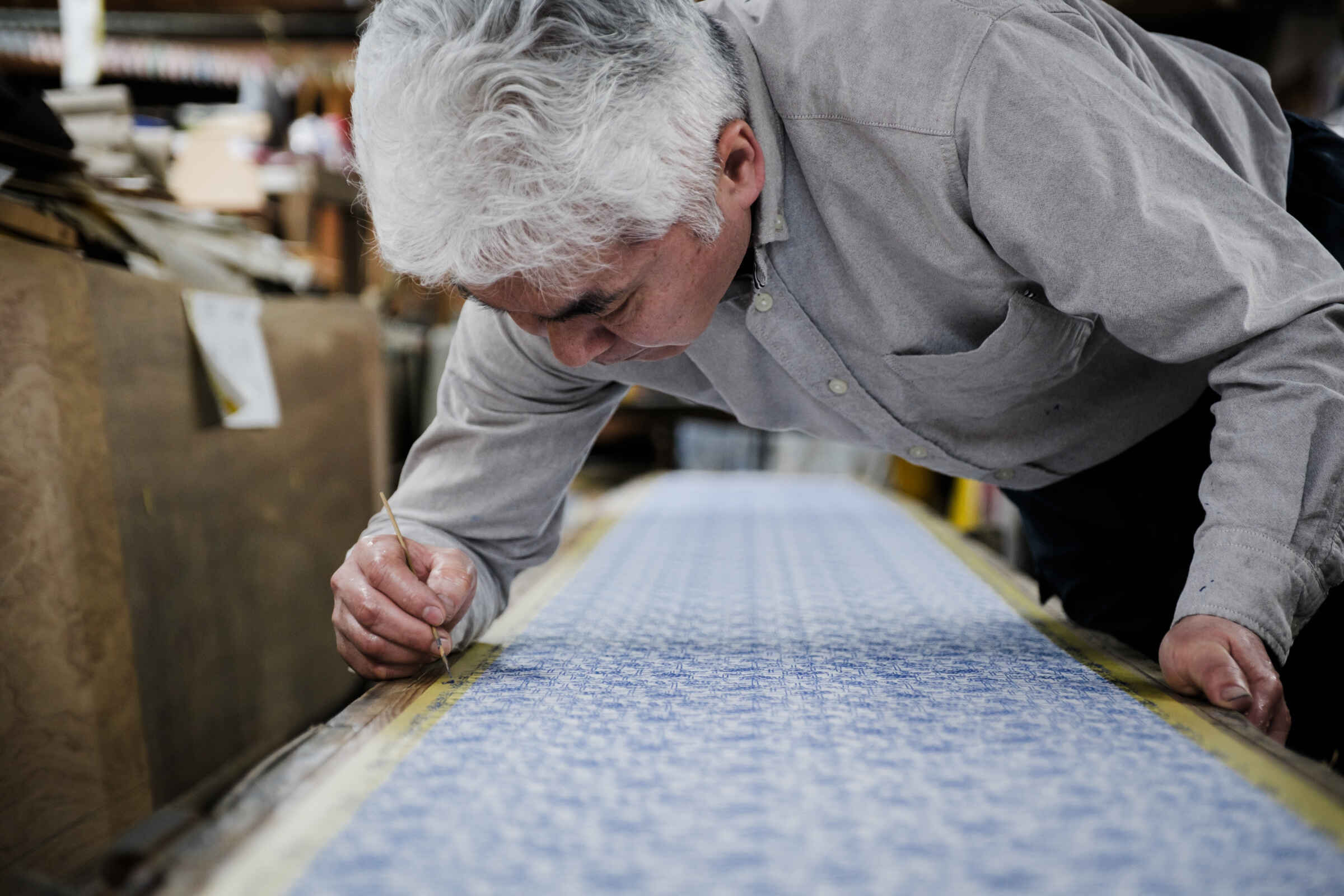
Move the patterned paper to the next position. Place the katagami so that the patterns are connected, and apply glue again. This process is repeated, and the pattern of the pattern is drawn on one piece of fabric with glue.
型紙を次の位置に移動。模様がつながるように型紙を置き、また糊を塗る。この作業を繰り返し、反物1本分に型紙の模様を糊で描いていく。
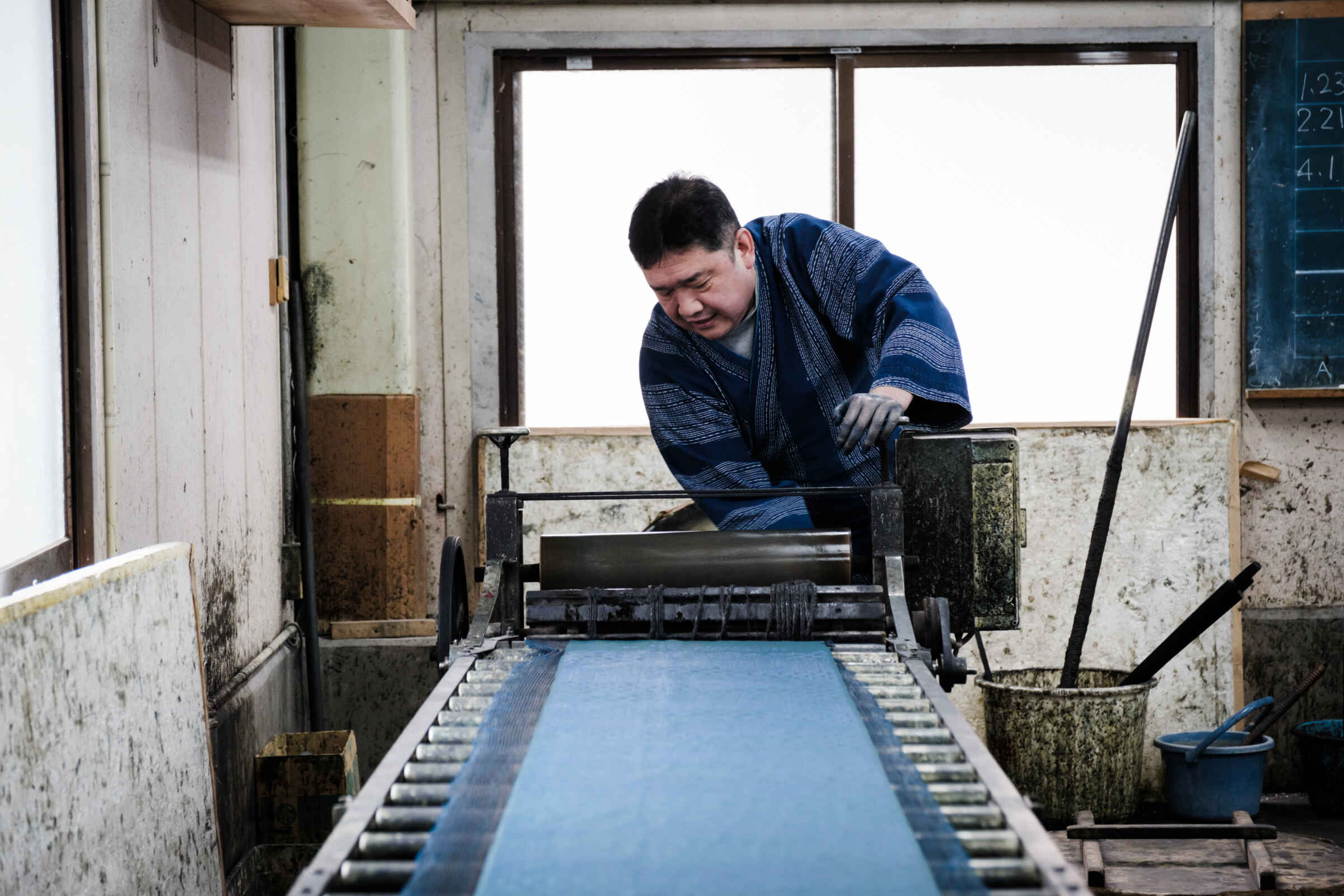
Once the glue is dry, the cloth is dipped into an indigo jar, rolled up with a special roller, and spread out on a stand to air dry. This process is repeated many times.
糊が乾燥したら、藍甕に浸し、専用のローラーで布を巻き上げ、台の上に広げて空気にさらし乾燥させる。この工程を何度も繰り返す。
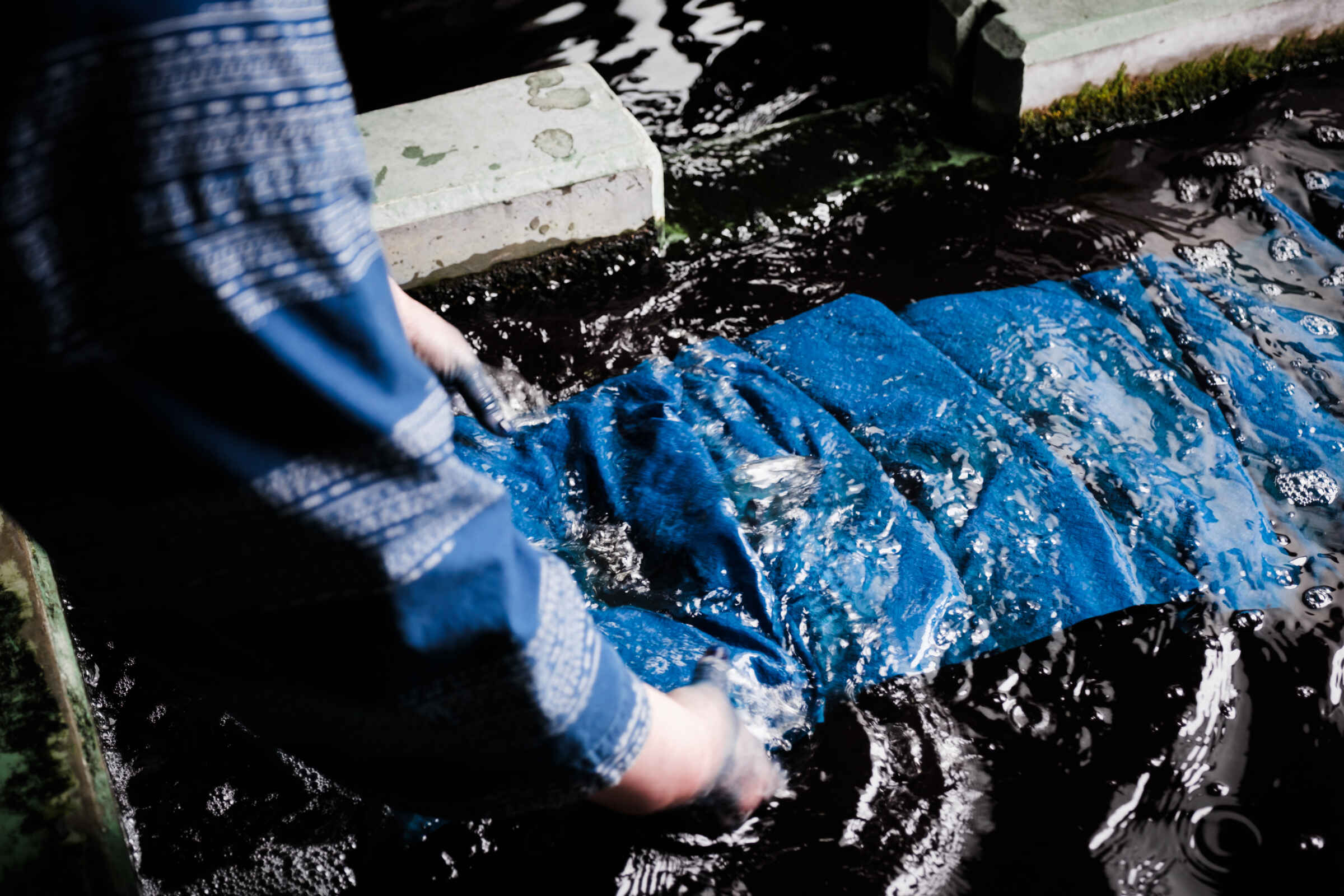
When the desired intensity of dye is achieved, the glue is finally washed off, and the glued areas are left with a white pattern instead of being dyed indigo.
求める濃さに染め上がったら、最後に糊を洗い流すと、糊を塗った部分が藍に染まらず、白い模様となって残る。
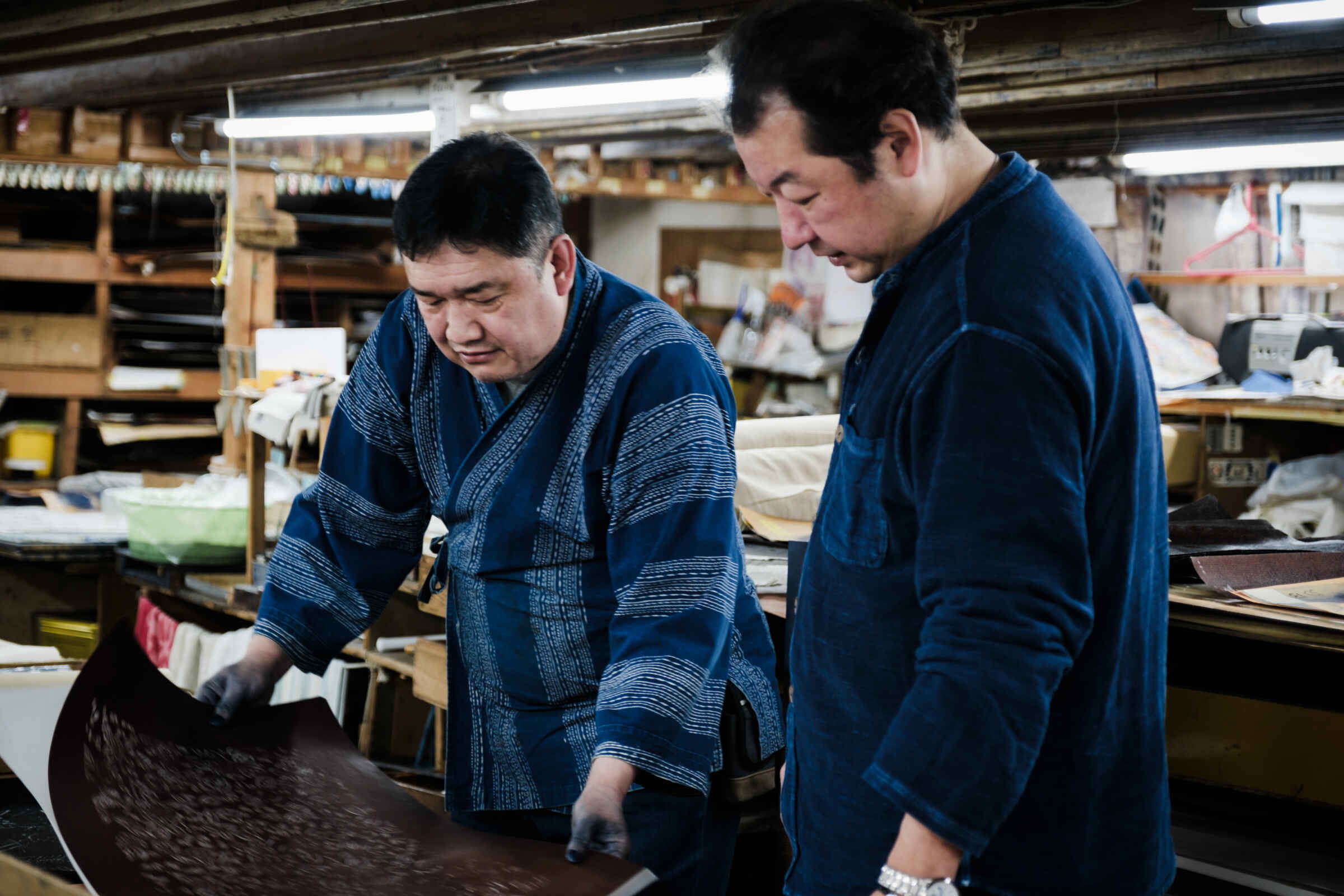
The technique, which requires precision and patience, was mostly abandoned during the Taisho era (1912-1926), leaving only a few workshops in Yashio City that still practice it. Frog Seal Dyeing Craft continues to carefully preserve this dyeing method.
精密さと根気が要求される技法は、大正時代にほとんどが廃れ、八潮市内でも行っている工房は数軒を残すのみとなった。蛙印染色工芸では現在もこの染色方法を大切に守り続けている。

